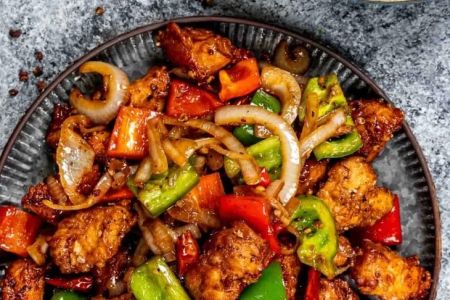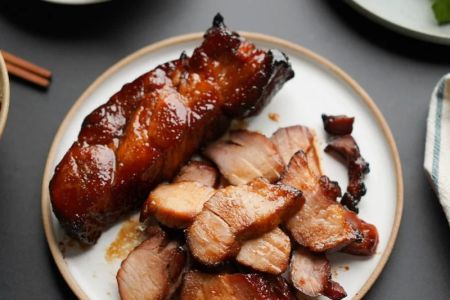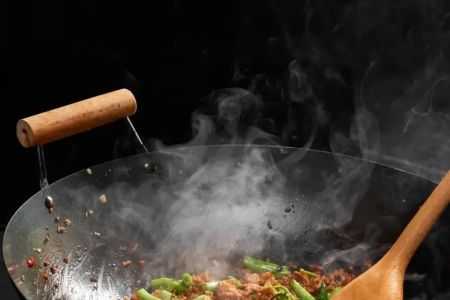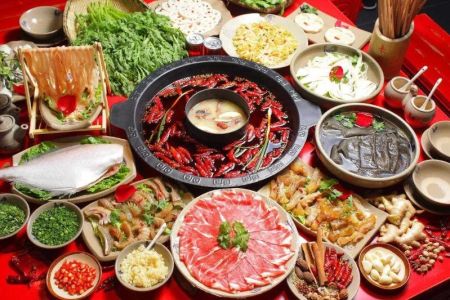Chinese-Style Tofu and Vegetable Stir-Fry: A Healthy, Flavorful Meal
- 1. Why Choose Tofu and Vegetables for Stir-Fry?
- 2. The Benefits of Chinese-Style Tofu and Vegetable Stir-Fry
- 3. How to Make the Perfect Chinese-Style Tofu and Vegetable Stir-Fry
- 4. Flavor Variations: Customizing Your Tofu and Vegetable Stir-Fry
- 5. Where to Buy Ingredients for Chinese-Style Tofu and Vegetable Stir-Fry
1. Why Choose Tofu and Vegetables for Stir-Fry?
Tofu and vegetables make for a perfect combination in Chinese-style stir-fry. Tofu, with its subtle flavor and versatile texture, pairs beautifully with a variety of fresh vegetables. This meal is not only healthy but also incredibly satisfying, providing a good balance of protein, fiber, and essential nutrients. For those who follow a vegetarian or plant-based diet, tofu is an excellent source of protein, while vegetables contribute vitamins and minerals necessary for a balanced diet.
2. The Benefits of Chinese-Style Tofu and Vegetable Stir-Fry
Chinese-style stir-fry dishes are known for their quick cooking time and full flavors. Tofu and vegetable stir-fry offers several benefits:
- Quick and easy to prepare: Stir-frying is one of the fastest cooking methods, helping you prepare a nutritious meal in just minutes.
- Low in calories: Tofu and vegetables are naturally low in calories, making this dish perfect for those looking to maintain a healthy weight.
- Rich in nutrients: This stir-fry is packed with vitamins and antioxidants, especially when you use a variety of colorful vegetables.
Additionally, the high protein content from tofu, combined with the fiber from the vegetables, helps keep you full longer, making it a great choice for both lunch and dinner.
3. How to Make the Perfect Chinese-Style Tofu and Vegetable Stir-Fry
Making the perfect tofu and vegetable stir-fry is simple with the right technique and ingredients. Here's a basic recipe:
- Ingredients: Firm tofu, your choice of vegetables (such as bell peppers, broccoli, carrots, and snap peas), garlic, ginger, soy sauce, sesame oil, and a touch of chili paste for heat.
- Preparation: Begin by draining and pressing the tofu to remove excess moisture. Cut it into cubes and sauté it in a pan until golden brown. Remove and set aside.
- Stir-frying the vegetables: In the same pan, heat sesame oil, add garlic and ginger, and cook until fragrant. Add the vegetables and stir-fry for a few minutes until they are crisp-tender.
- Combining: Add the tofu back into the pan, pour in the soy sauce and chili paste, and stir everything together. Let the flavors meld for a minute before serving.
Serve your stir-fry with steamed rice or noodles for a complete meal. This dish is versatile and can be customized based on your preferences, making it suitable for any occasion.
4. Flavor Variations: Customizing Your Tofu and Vegetable Stir-Fry
One of the best parts about Chinese-style tofu and vegetable stir-fry is how easily it can be customized to suit your taste. Here are a few flavor variations to consider:
- Sweet and savory: Add a splash of hoisin sauce and a sprinkle of brown sugar for a sweet twist.
- Spicy: For a spicy kick, increase the amount of chili paste or add some dried chili peppers during stir-frying.
- Citrusy: Add a squeeze of lime or lemon juice for a zesty, refreshing flavor.
Feel free to experiment with different vegetables, sauces, and spices to make the dish your own. The possibilities are endless!
5. Where to Buy Ingredients for Chinese-Style Tofu and Vegetable Stir-Fry
For the freshest ingredients, visit your local Asian grocery store. They will have a wide selection of tofu, soy sauce, sesame oil, and specialty vegetables. Many stores also offer online shopping for convenience, which means you can easily get all the ingredients delivered to your doorstep. You can also find some of the best ingredients for Chinese-style tofu and vegetable stir-fry on Chinese Food's website, which offers a variety of authentic products.
With just a few key ingredients, you can easily recreate this dish at home and enjoy the flavors of Chinese cuisine without needing to leave your kitchen.






![Top Chinese Restaurants for Authentic Cantonese Cuisine in [Your City]](https://img.gochinarose.com/d33/2507/4157910400_450x300.webp)
